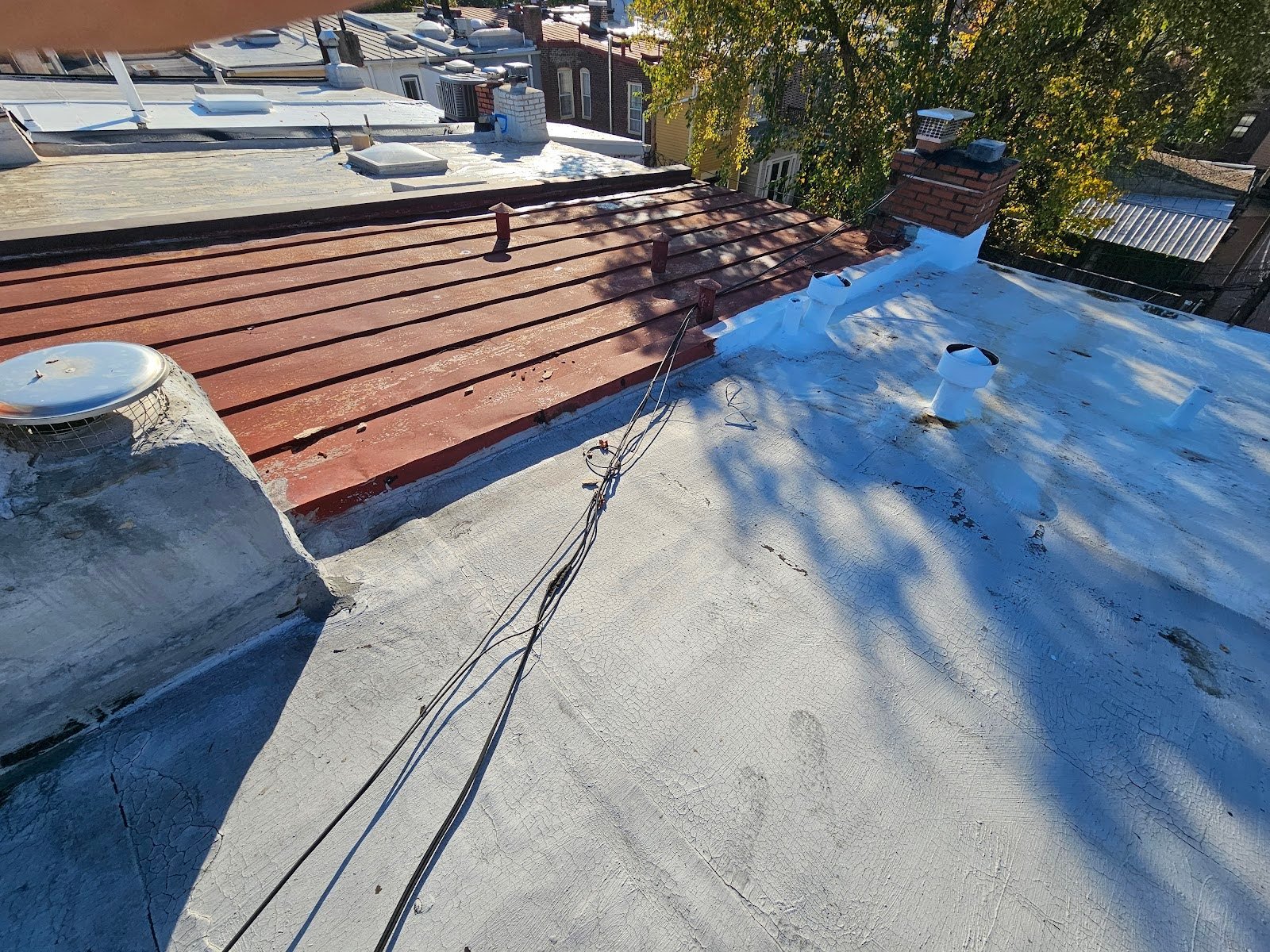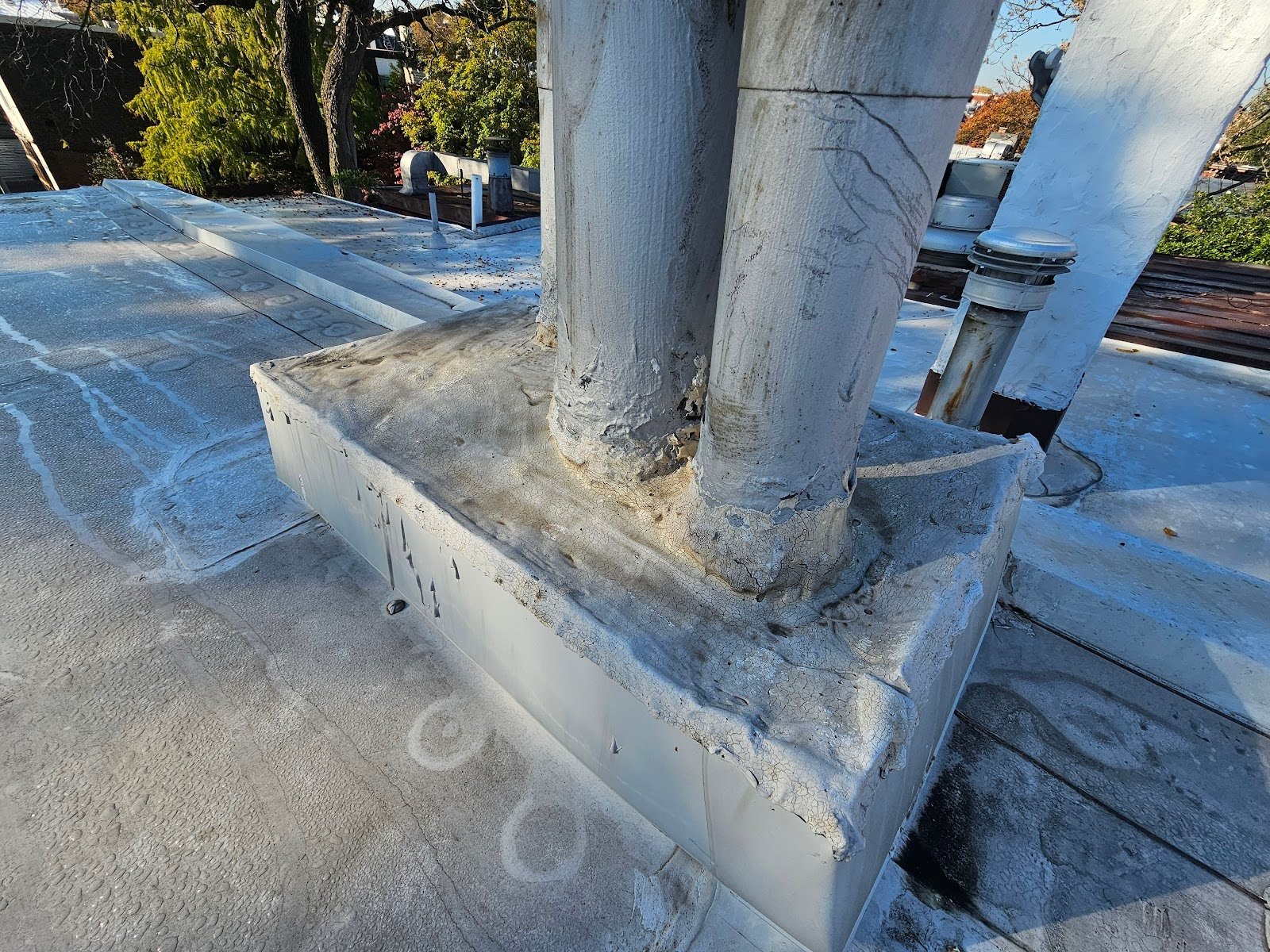Seam roof penetration tip
This past week, we looked at examples of pipe penetrations through a standing seam metal roof. We also talked about some of the differences between other historic roof systems and standing seam roof systems. At this point in time, most of the standing seam roof system here on the main roofs of the buildings in Washington DC are remnants of the past and are significantly aged. These types of roof systems are still available, but not highly recommended, particularly at the high roofs of buildings where they are out of view or out of eyesight from the street.
These roofs generally look better than the more contemporary or modern single ply membranes made from synthetic polymers or synthetic rubber. They have both an interesting design in the pattern of the standing seams and they have an interesting historic aesthetic, not found on many contemporary or modern roof systems. In some cases, we still install standing seam roofs, even in modern times because the roof can be seen from the street view and is a prominent architectural feature or detail. A sloped front porch roof might be an applicable example.
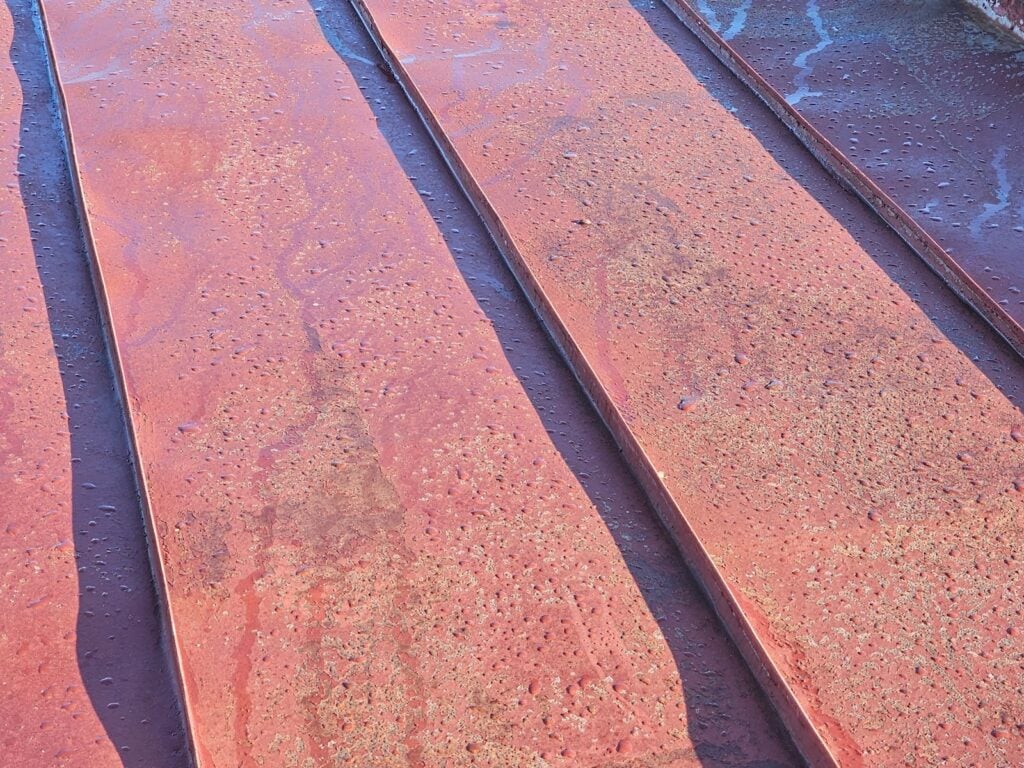
Nonetheless, from a performance perspective, most modern roofs are better in many ways. Particularly TPO and a few other types of contemporary modern systems have extremely high performance, high reflectivity to lower building temperatures in the hot summers, and easier maintenance and or options for modifications. One of those common types of modifications is the installation of penetrations through the roof system. Often, interior renovations to the layout or installations of new bathrooms or plumbing systems may require new penetrations through the rooftop.
Plumbing vents, for example, need to be vented through a roof, in most cases. Installation of HVAC systems will often also require the installation of penetrations through a rooftop. Exhaust air, and/or ductwork will also generally need to penetrate through a rooftop for that forced air to be channeled or funneled out of or into the building.
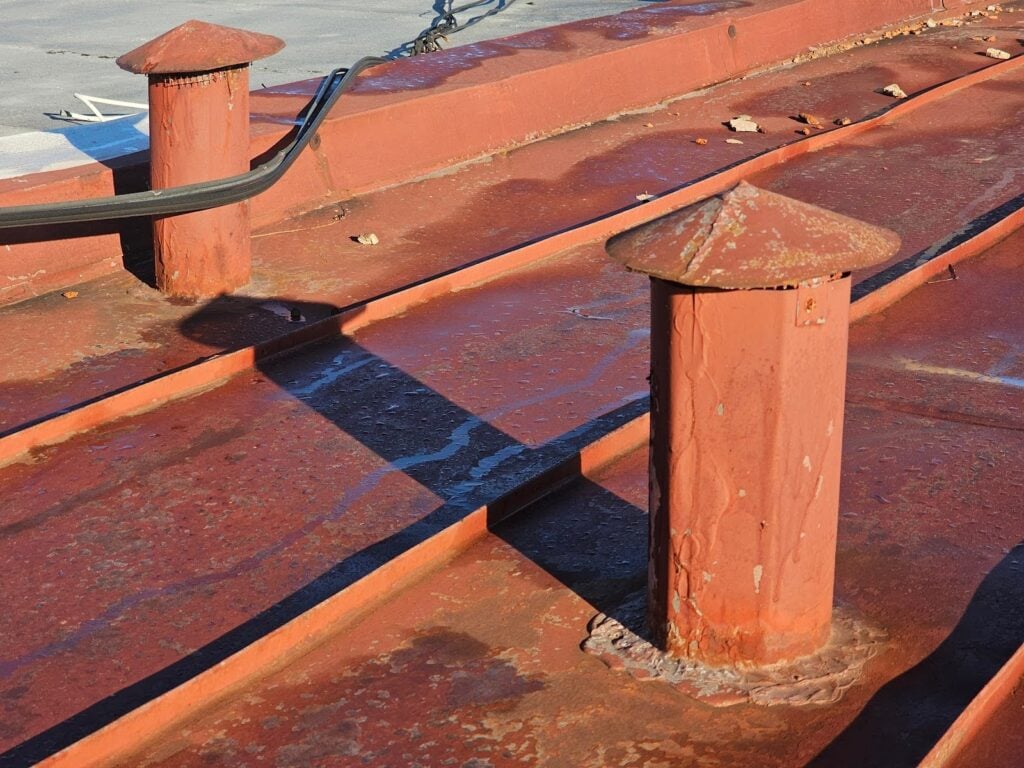
The picture below shows a soldered weld of a metal exhaust pipe through the standing seam metal roof. In this case, they have created a flange at the base of the duct and soldered that flange on top of the standing seam roof. This was considered a proper type of installation in historic times.
It has also managed to hold up, even after all these years. Metal roof systems, and many other types of building materials will shift and slightly change in size, essentially expanding or contracting, with movement affected by thermal changes, both from the Sun and from the exposure to the ambient air. Metals have a relatively comparative high degree of movement, as a material as affected by temperature changes. Often these temperature changes can create points of stress and pressure on metal elements that can lead to breakage or tearing.
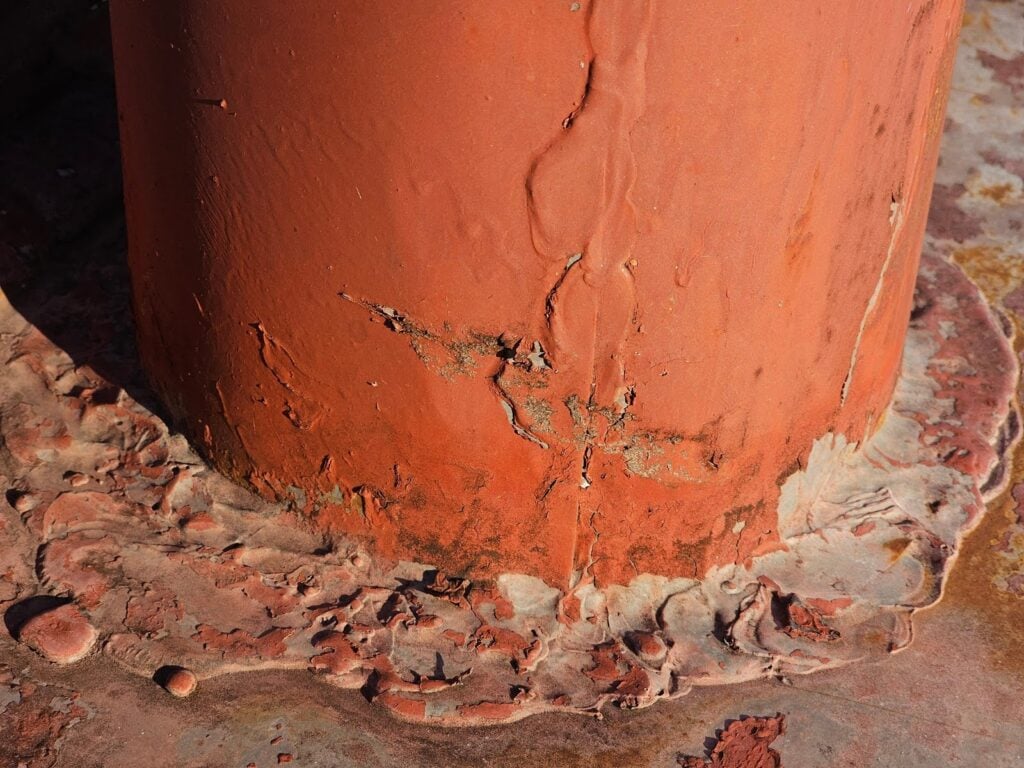
If you look at the area of the weld, you can see that there is a red paint that has been applied. At the base of the transition from the horizontal surface to the vertical surface of the pipe, there are spots of deterioration where the paint is wearing off. Unlike some modern or contemporary roof systems which require relatively low maintenance, metal roofs generally require residual repetitive iterations of repainting. This is a relatively significant maintenance requirement for metal roofs.
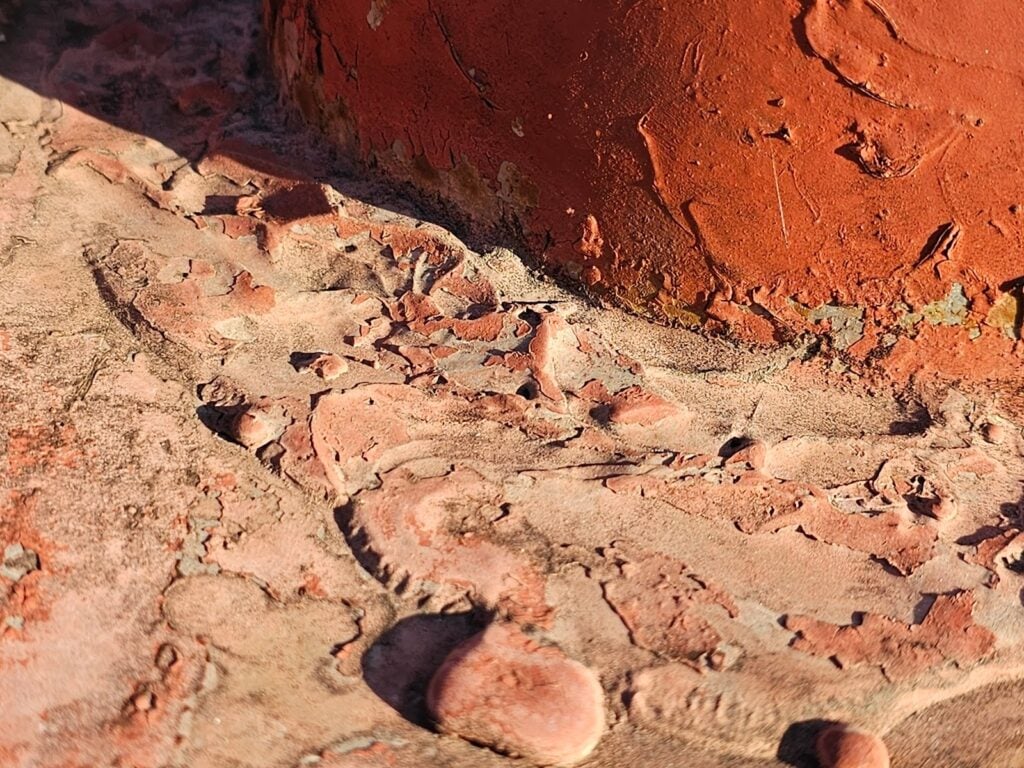
Although this particular red paint has worn, to some degree, it’s still in relatively decent shape. We often see metal roofs with significantly higher deterioration at the paint, on the surface of the membrane. Painting, in itself, isn’t related to penetrations, but this particular detail is also another important consideration that is specific or directly related to metal roofs.
Some types of modified bitumen roof membranes, also, need to be painted, but not all other roof membranes have that type of ongoing upkeep and maintenance requirement. In some cases, some single ply membranes like TPO, call themselves maintenance free roof systems. We don’t exactly agree with that terminology though because even roof systems that don’t need to be painted still need upkeep. In many cases upkeep is simply needed because so many adjacent or other systems such as the penetration themselves are outside of the direct concentration of the roof membrane itself, yet need upkeep and maintenance themselves.
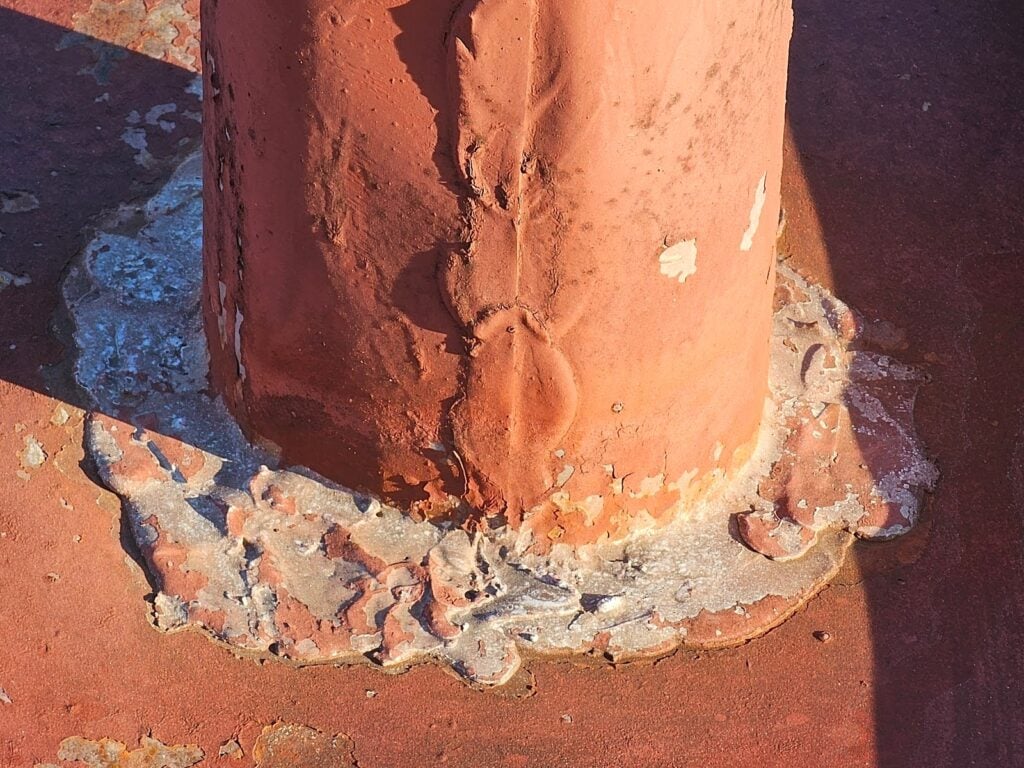
For example, where pipe penetrations have problems that are caused by the piping, those problems will directly affect the roof membrane and can lead to leakage. Therefore, even though the piping is not part of the roof system, the piping can cause problems to the roof. The same or similar types of concerns apply to historic masonry chimneys at rooftop.
Those chimneys come through the roof system and therefore are also considered a penetration that passes through the roof membrane where historic brickwork has historic lime mortar that has deteriorated, water can enter in through the brickwork and become a leak that passes into the interior of the building. This type of leakage isn’t caused by anything related to the roof itself, yet has to be considered in a wider view of upkeep and maintenance of rooftop elements that goes beyond just the roof membrane system itself.
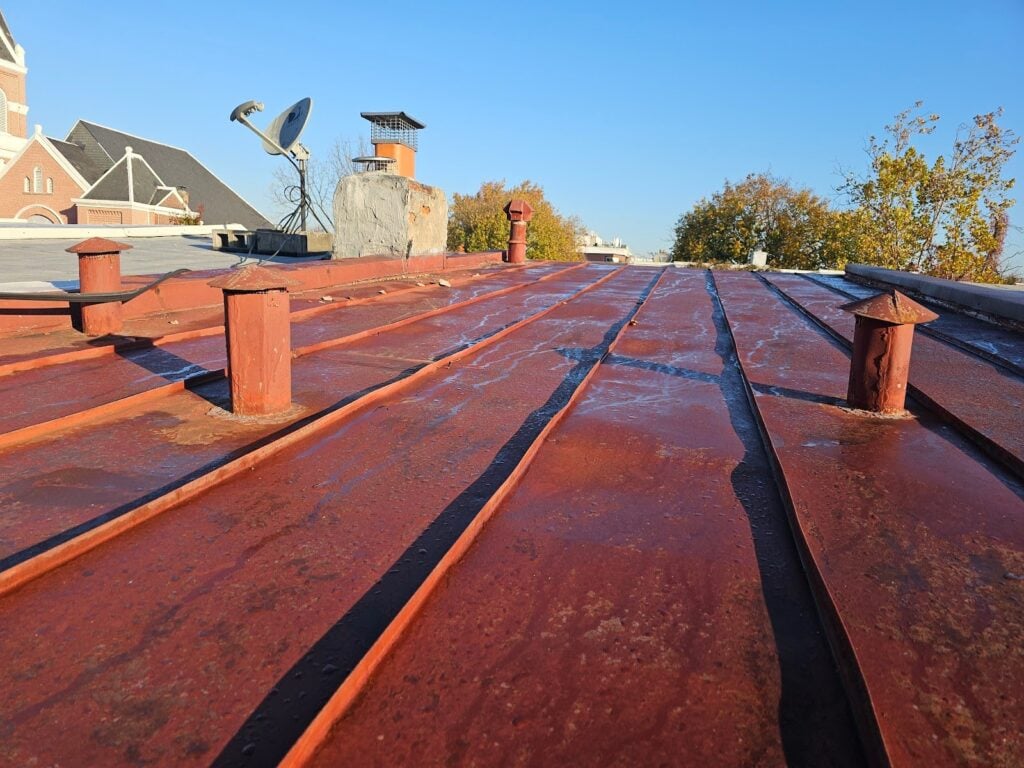
We provide this information here on our blog, and our website, to help our customers and future clients, and we recommend every building owner in DC who values the longevity of their roof (and their investments) and building use a contractor who values the simple and important principles of proper roof construction like Dupont Roofing DC. Our company specializes in flat roofing here in Washington DC and we’re happy to help building owners of almost all types.
Learn more about our company and the proper techniques of working with roofing on historic buildings in Washington DC here on our blog at DupontRoofingDC.com, and you can call us at (202) 840-8698 and email us at dupontroofingdc@gmail.com. We are happy to help and at least talk through options.

